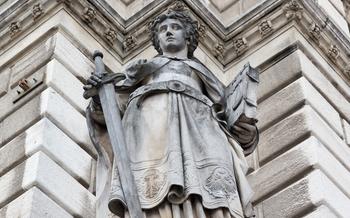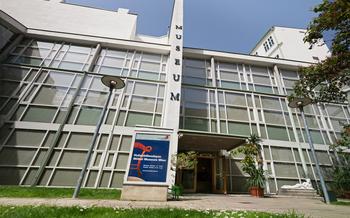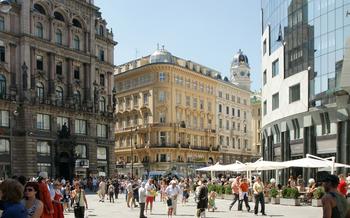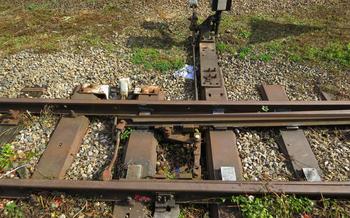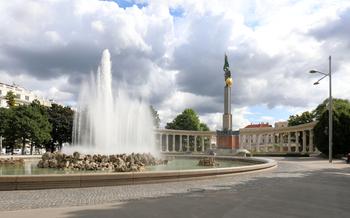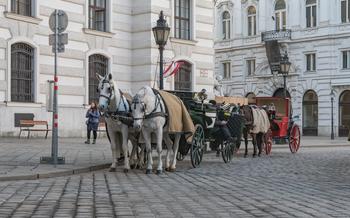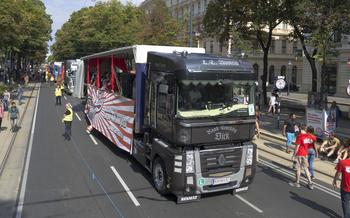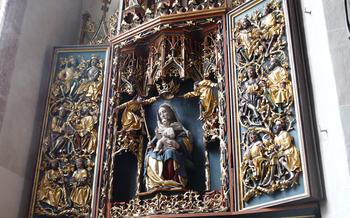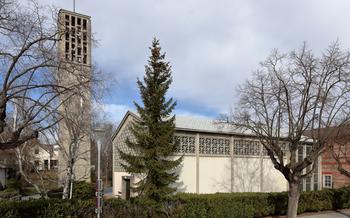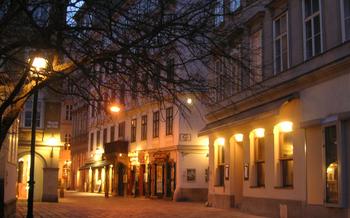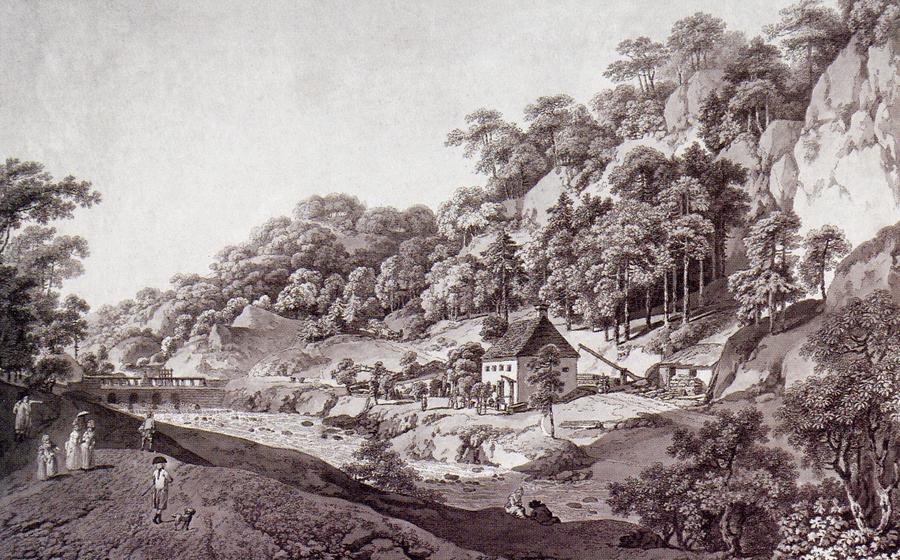
Josefsplatz Square
- The Imperial Palace: A Glimpse into Habsburg Splendor
- Historical Background
- Architectural Marvels
- Museum Highlights
- Guided Tours
- The Spanish Riding School: A Legacy of Equestrian Excellence
- History of the School
- Lipizzaner Horses
- Training Methods
- Performances
- The Kunsthistorisches Museum: A Masterpiece of Art and History
- The Naturhistorisches Museum: Exploring the Wonders of Natural History
- The Michaelerplatz: A Gateway to Imperial Grandeur
- The Burgtheater: A Stage for Theatrical Excellence
- The Volksgarten: An Oasis in the Heart of the City
- Historical Context
- Garden Design
- Notable Landmarks
- Cultural Events
- The Belvedere Palace: A Baroque Gem with Stunning Views
- Insider Tip: Exploring Secret Passages and Hidden Courtyards
The Imperial Palace: A Glimpse into Habsburg Splendor
The Imperial Palace, a majestic symbol of imperial power and grandeur, stands as a testament to the Habsburg dynasty's rich history and legacy. Built in the 13th century, the palace served as the official residence of the Habsburg rulers for over 600 years, witnessing countless historical events and transformations.
Historical Background
The Imperial Palace's history is intertwined with the rise and fall of the Habsburg dynasty, one of Europe's most influential ruling families. The Habsburgs ruled over vast territories across Europe for centuries, leaving an indelible mark on the continent's political and cultural landscape. The palace served as the seat of their power, where they conducted state affairs, hosted lavish ceremonies, and entertained guests from around the world.
Architectural Marvels
The Imperial Palace is a masterpiece of Baroque architecture, showcasing the grandeur and opulence of the Habsburg era. Its sprawling complex comprises 2,600 rooms, each adorned with intricate details, opulent furnishings, and stunning works of art. The palace's exterior features a harmonious blend of Renaissance and Baroque elements, with its whitewashed facades, arched windows, and elaborate portals creating an awe-inspiring sight.
Museum Highlights
Today, the Imperial Palace houses a series of museums that offer visitors a glimpse into the Habsburgs' opulent lifestyle and the palace's rich history. The Sisi Museum is dedicated to Empress Elisabeth of Austria, showcasing her personal belongings, including her famous collection of gowns and jewelry. The Imperial Apartments provide an intimate look into the private lives of the Habsburg rulers, revealing their lavish living quarters and opulent furnishings.
Guided Tours
Guided tours of the Imperial Palace offer an immersive experience, allowing visitors to explore the palace's grand state rooms, private chambers, and hidden corners. Expert guides share fascinating stories and anecdotes about the Habsburgs, bringing the palace's history to life. Visitors can also wander through the palace's beautiful gardens, which offer a serene retreat amidst the bustling city.
The Spanish Riding School: A Legacy of Equestrian Excellence
The Spanish Riding School, nestled within the Hofburg Palace complex, is a living testament to the Habsburg dynasty's enduring love for horses and equestrian arts. Founded in the 16th century, the school has preserved and refined the art of classical dressage, showcasing the remarkable skills and grace of its Lipizzaner horses and their skilled riders.
History of the School
The origins of the Spanish Riding School can be traced back to the 16th century, when Emperor Maximilian II brought a stud of Lipizzaner horses to Vienna. These horses, known for their intelligence, athleticism, and trainability, became the foundation of the school's breeding program. Over the centuries, the school's reputation grew, and it became a center of excellence for equestrian training, attracting students and visitors from all over the world.
Lipizzaner Horses
The Lipizzaner horses, with their distinctive gray coats and elegant movements, are the heart and soul of the Spanish Riding School. These horses, bred specifically for dressage, are known for their calm temperament, intelligence, and ability to perform complex maneuvers with precision and grace. The school's breeding program ensures that the Lipizzaner horses maintain their unique characteristics and qualities, preserving a living legacy of equestrian excellence.
Training Methods
The Spanish Riding School employs classical training methods that have been passed down through generations. The horses undergo a rigorous training program that begins at a young age, focusing on developing their obedience, balance, and coordination. The training process is based on positive reinforcement, with the horses rewarded for their efforts and progress. The result is a harmonious partnership between horse and rider, where the horse performs with grace and elegance, seemingly responding to the rider's slightest cues.
Performances
The Spanish Riding School showcases the culmination of its training and expertise in mesmerizing performances that leave audiences in awe. The performances, held in the Winter Riding School, feature the Lipizzaner horses and their skilled riders executing intricate dressage movements, including the famous "airs above the ground," where the horses perform graceful leaps and pirouettes. These performances are a testament to the school's commitment to preserving and promoting the art of classical dressage, captivating audiences with their beauty and precision.
The Kunsthistorisches Museum: A Masterpiece of Art and History
Museum's founding:
The Kunsthistorisches Museum, or Museum of Art History, was founded by Emperor Franz Joseph I in 185Originally intended to house the Habsburg dynasty's extensive collection of art and artifacts, the museum was designed by renowned architects Gottfried Semper and Karl Freiherr von Hasenauer.
Architectural highlights:
The museum's grand Neo-Renaissance architecture is a sight to behold. Its imposing facade is adorned with intricate sculptures, allegorical figures, and a majestic dome that dominates the skyline. The interior is equally impressive, with opulent marble staircases, vaulted ceilings, and decorative details that showcase the splendor of the Habsburg era.
Art collections:
The Kunsthistorisches Museum boasts one of the world's most renowned art collections, spanning various periods and genres. Highlights include masterpieces by Pieter Bruegel the Elder, Raphael, Titian, Caravaggio, and Rembrandt. The Egyptian and Near Eastern collection is particularly noteworthy, with its impressive collection of artifacts from ancient civilizations.
Special exhibitions:
In addition to its permanent collection, the Kunsthistorisches Museum hosts temporary exhibitions that showcase specific themes or artists. These exhibitions offer visitors the opportunity to explore new perspectives and engage with contemporary art and historical artifacts.
The Naturhistorisches Museum: Exploring the Wonders of Natural History
Museum's origins:
The Naturhistorisches Museum (Natural History Museum) in Vienna, Austria, traces its origins to the Habsburg dynasty's imperial collection of natural history specimens. Founded in 1750 by Emperor Francis I, the collection was initially housed in the Hofburg Palace before being moved to its current location on the Ringstrasse in 188
Architectural style:
The museum's impressive Neo-Gothic architecture, designed by architects Gottfried Semper and Carl von Hasenauer, is a testament to the grandeur of the Habsburg Empire. The building's exterior features intricate carvings, sculptures, and gargoyles, while the interior boasts vaulted ceilings, marble floors, and grand staircases.
Exhibit highlights:
The Naturhistorisches Museum houses a vast and diverse collection of natural history specimens, covering various fields such as zoology, botany, mineralogy, and paleontology. Highlights of the collection include the famous Venus of Willendorf, a prehistoric figurine dating back to 25,000 BC; a massive dinosaur skeleton nicknamed "Tristan"; and an extensive collection of meteorites.
Educational programs:
The museum is dedicated to promoting natural history education and research. It offers a range of educational programs for visitors of all ages, including guided tours, workshops, lectures, and interactive exhibits. The museum also collaborates with universities and research institutions to conduct scientific studies and contribute to the advancement of natural history knowledge.
The Michaelerplatz: A Gateway to Imperial Grandeur
The Michaelerplatz, located in the heart of Vienna's historic center, serves as a grand entrance to the Hofburg Palace, the former imperial residence of the Habsburg dynasty. Its origins date back to the 13th century when it was used as a market square. Over the centuries, the square underwent several transformations, reflecting the changing fortunes of the Habsburg monarchy.
In the 17th century, the square was redesigned in a Baroque style, with the construction of the Michaelerkirche (St. Michael's Church), a magnificent Jesuit church known for its impressive facade and ornate interior. The church's twin towers, reaching towards the sky, became iconic landmarks of the square.
During the 19th century, the Michaelerplatz underwent further embellishment with the addition of the Hofburg's Neue Burg wing, which houses the Albertina Museum, renowned for its world-class collection of prints and drawings. The square also features the equestrian statue of Emperor Francis I, paying tribute to the Habsburg ruler who played a pivotal role in shaping Vienna's urban landscape.
Today, the Michaelerplatz exudes an aura of grandeur and history, serving as a gateway to the imperial splendor of the Hofburg Palace. Visitors can admire the harmonious blend of Baroque and Neoclassical architecture, stroll through the square, and soak up the atmosphere of Vienna's rich past.
The Burgtheater: A Stage for Theatrical Excellence
The Burgtheater, a cornerstone of Vienna's cultural landscape, has captivated audiences with its theatrical brilliance for over two centuries. Founded in 1776 by Emperor Joseph II, this grand theater has played a pivotal role in shaping the city's theatrical identity.
With its imposing Neo-Renaissance facade, the Burgtheater exudes an aura of grandeur that befits its status as one of Europe's leading theaters. Step inside, and you'll be awestruck by the opulent interiors, adorned with intricate frescoes, plush red velvet seats, and gleaming chandeliers.
The theater's repertoire is as diverse as it is impressive, showcasing a harmonious blend of classical masterpieces, contemporary productions, and world premieres. From Shakespeare and Schiller to contemporary playwrights, the Burgtheater's stage has hosted some of the most renowned works in theater history.
But the Burgtheater's allure extends beyond its performances. Its rich history and behind-the-scenes secrets captivate visitors from all walks of life. Embark on a guided tour to uncover the theater's hidden nooks and crannies, learn about its legendary actors and actresses, and discover the intricate workings of this theatrical powerhouse.
Whether you're a seasoned theatergoer or simply seeking a taste of Vienna's cultural heritage, the Burgtheater promises an unforgettable experience. Immerse yourself in the magic of live performances, marvel at the architectural splendor, and let the enchantment of the Burgtheater transport you to a world of theatrical wonder.
The Volksgarten: An Oasis in the Heart of the City
Amidst the grandeur of Vienna's imperial architecture, the Volksgarten stands as a tranquil oasis, offering a verdant escape from the bustling city center. This charming park, established in the early 19th century, has a rich history and is a beloved destination for locals and visitors alike.
Historical Context
The Volksgarten's origins can be traced back to the era of Emperor Franz II, who sought to create a public garden for the enjoyment of his subjects. Designed by the renowned landscape architect Ludwig Förster, the park opened its gates in 1823 and quickly became a popular meeting place for Viennese society.
Garden Design
The Volksgarten's layout is a testament to the Romantic era's fascination with nature and picturesque landscapes. Winding paths meander through the park, leading visitors past colorful flowerbeds, manicured lawns, and towering trees. The park's centerpiece is the Theseus Temple, a replica of the ancient Greek temple that houses a statue of the mythical hero Theseus.
Notable Landmarks
In addition to the Theseus Temple, the Volksgarten is home to several other notable landmarks. The Rose Garden, with its vibrant display of over 3,000 roses, is a fragrant delight. The Mozart Memorial, erected in 1896, pays homage to the musical genius who frequently performed in the park's concert hall.
Cultural Events
The Volksgarten is not just a place for quiet contemplation; it is also a vibrant cultural hub. The park hosts a variety of events throughout the year, including concerts, performances, and exhibitions. The annual Viennese Ball, held in the park's Musikverein building, is a highlight of the city's social calendar.
Whether you seek a peaceful retreat or a lively cultural experience, the Volksgarten has something to offer. Immerse yourself in the park's serene beauty, admire its historical landmarks, and enjoy the vibrant atmosphere that makes it one of Vienna's most beloved green spaces.
The Belvedere Palace: A Baroque Gem with Stunning Views
Nestled amidst the sprawling gardens of Vienna's Belvedere Palace, visitors can embark on a journey through art, history, and breathtaking panoramas. Built in the 18th century as a summer residence for Prince Eugene of Savoy, the Belvedere Palace stands as a testament to the grandeur of the Baroque era. Its two distinct buildings, the Upper Belvedere and the Lower Belvedere, are connected by a picturesque garden, offering a serene escape from the bustling city.
Architectural Marvels: Adorned with intricate carvings, opulent frescoes, and graceful statues, the Belvedere Palace is a masterpiece of Baroque architecture. The Upper Belvedere, the larger of the two buildings, boasts an impressive facade adorned with allegorical figures and elaborate ornamentation. Its grand staircase, lined with marble statues, leads visitors to the opulent state rooms, where they can admire the palace's rich interiors, including crystal chandeliers, gilded mirrors, and exquisite tapestries.
Art Collections: The Belvedere Palace is home to a world-renowned art collection, housing masterpieces from various periods and genres. The Upper Belvedere is dedicated to Austrian art, showcasing works by renowned artists such as Gustav Klimt, Egon Schiele, and Oskar Kokoschka. Visitors can marvel at Klimt's iconic painting "The Kiss," a symbol of Viennese Art Nouveau, and Schiele's poignant self-portraits that capture the essence of human emotion.
Panoramic Views: The Belvedere Palace offers unparalleled views of Vienna's cityscape. From the Upper Belvedere's panoramic terrace, visitors can gaze upon the city's sprawling rooftops, the verdant gardens of the Belvedere, and the iconic spires of St. Stephen's Cathedral. The stunning vistas make the Belvedere Palace a popular spot for photographers and art enthusiasts alike.
Insider Tip: Exploring Secret Passages and Hidden Courtyards
Beyond the iconic landmarks and attractions that grace Josefsplatz, there lies a world of hidden gems waiting to be discovered. Explore secret passages and courtyards that connect the buildings, revealing intriguing glimpses into the square's rich history. Uncover unique perspectives and capture stunning photos from secret viewpoints, offering a fresh perspective on the square's grandeur.
Indulge in the Viennese tradition of coffee and cake at charming hidden cafes tucked away within the square. Soak up the atmosphere as you savor delicious pastries and aromatic coffee, surrounded by the elegance and history of Josefsplatz. These hidden spots offer a unique opportunity to experience the true essence of Vienna's charm and elegance.
So, venture beyond the main attractions and discover the hidden treasures that Josefsplatz holds. Explore secret passages, find unique perspectives, and indulge in Viennese delicacies in charming hidden cafes. These hidden gems will add an unforgettable touch to your visit, leaving you with a deeper appreciation for the square's rich history and vibrant atmosphere.
